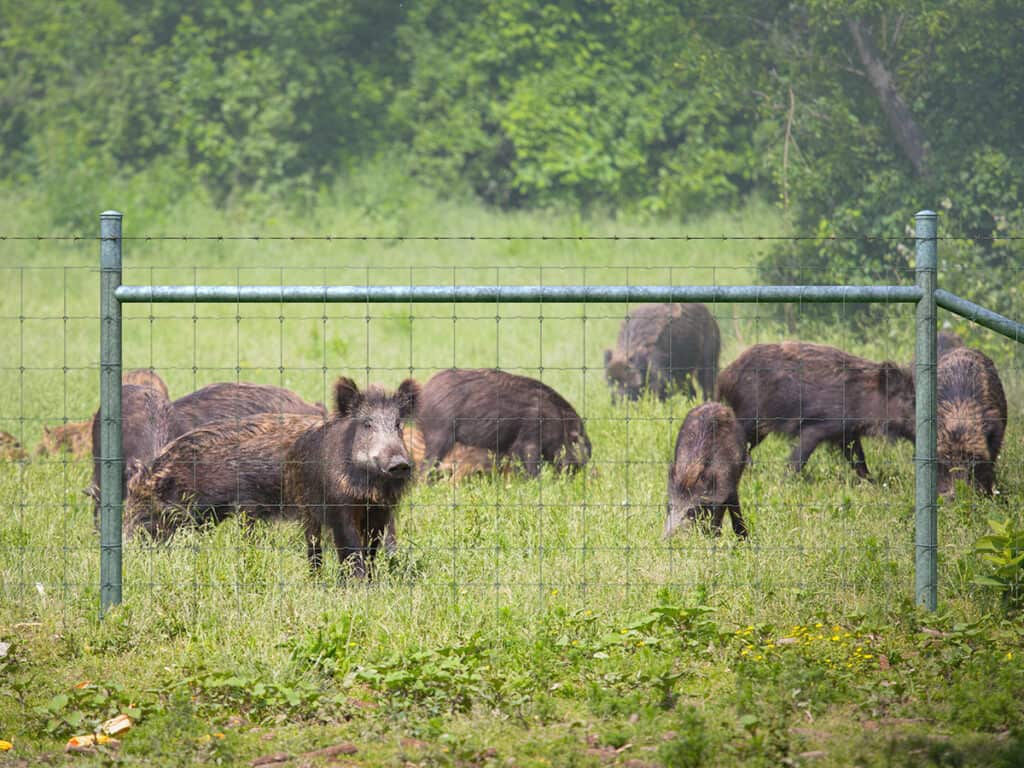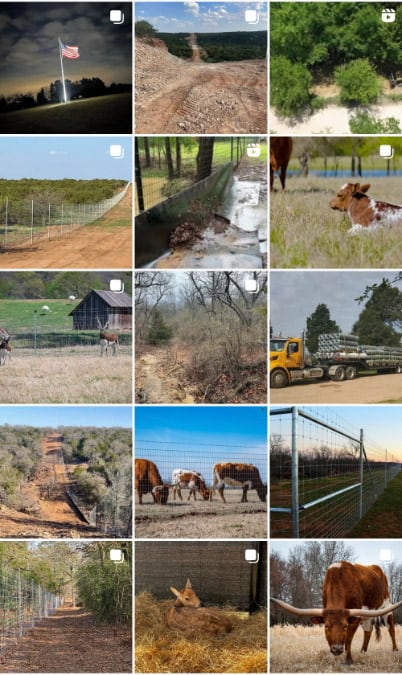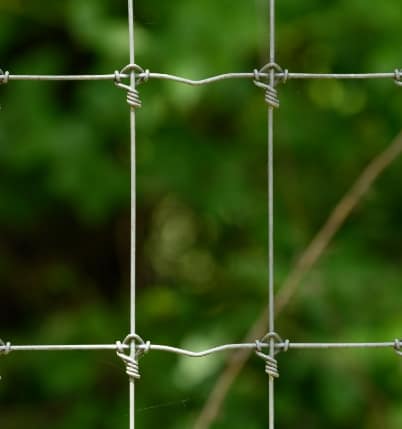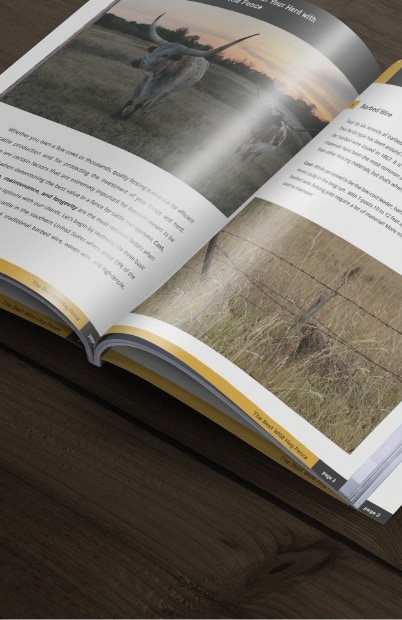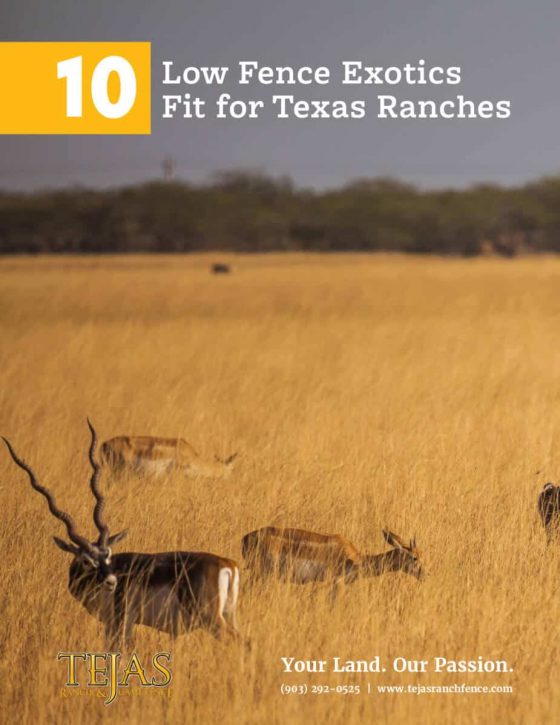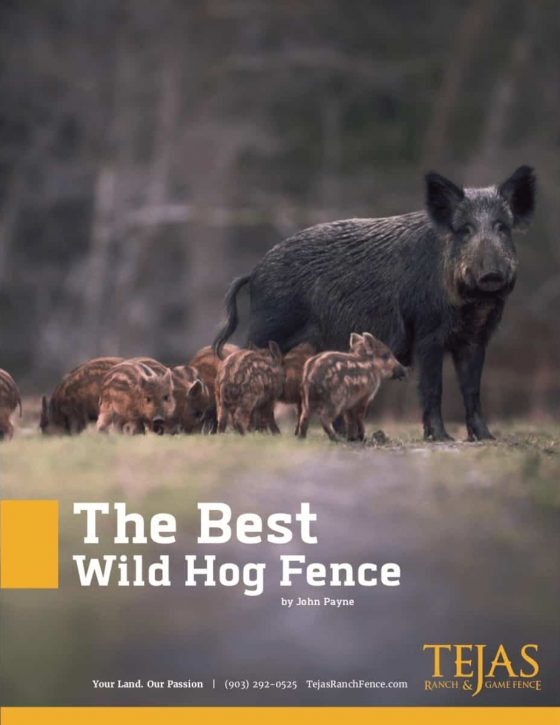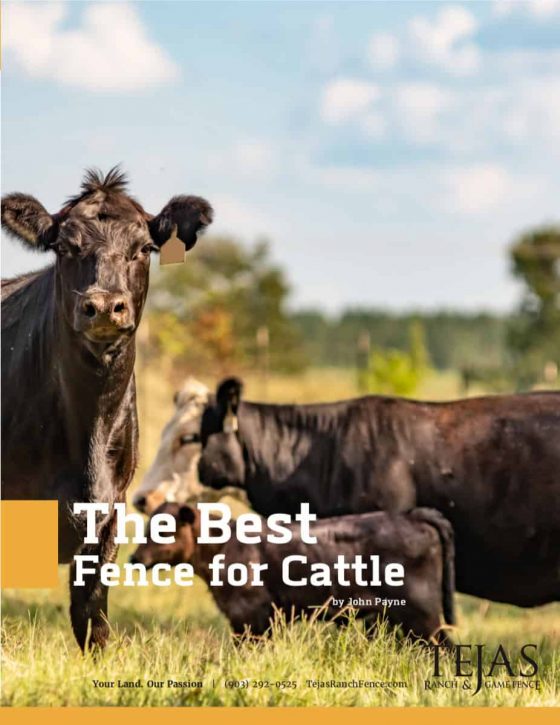Keep feral hogs and wild pigs out of your property with the right barriers.
Feral hogs also known as wild pigs menace native wildlife, damage habitats, and inhabit 79% of Texas acreage. Exclusion fencing for hogs is essential; these vermin that cause approximately $52 million in damages to Texas agriculture annually.
Effective fencing is one method of eliminating wild pig damage and reducing economic impact on valuable agricultural land or where other control techniques are not possible.
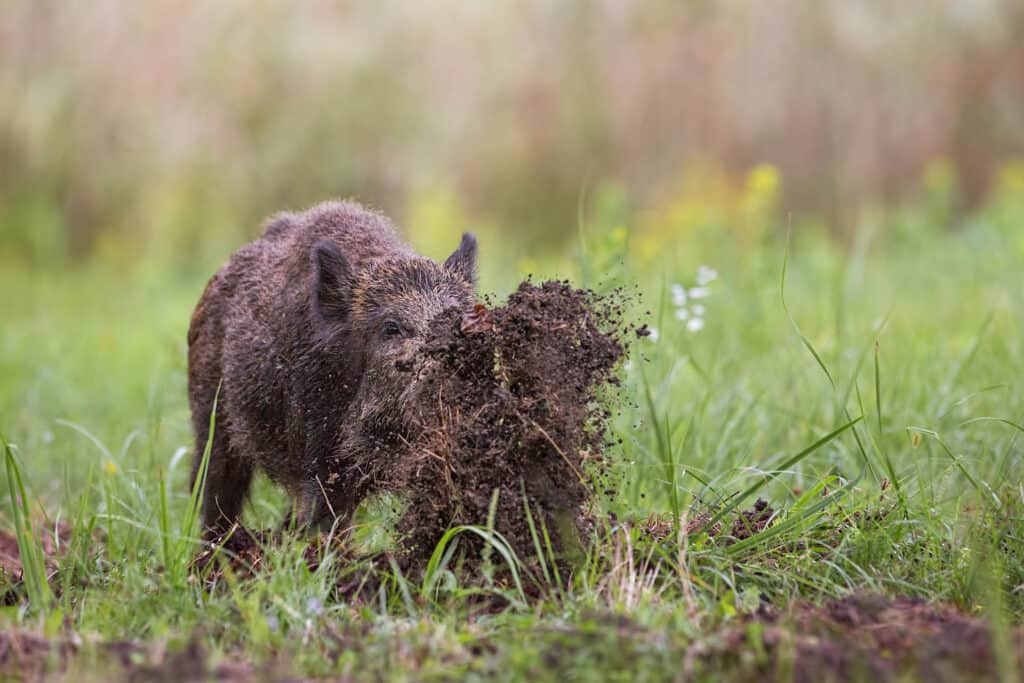
Any sufficiently motivated hog can breach an ordinary fence, especially a wild boar, the stronger, more aggressive male. Feral hogs are big, bulky animals, and fences must be equally robust to exclude them. For exclusion fences for hogs and wild pigs to be successful, the fences need to be made of special high tensile wire installed in a way that leverages the strength of the wire with strong structural members at corners, gates and terminal points.
Feral hogs go through fences. They don’t normally go over or under fences and won’t jump unless forced. This is why hogs only need a barrier three feet high, although high-tensile mesh cattle fence or high game fence is an effective deterrent that can fulfill more than one function..
While fencing can seem expensive at first with the cost of clearing fence lines, materials, and labor costs, these outlays will balance out over the lifetime of the fence. It is especially beneficial to reduce the impact of feral hogs on high-yield areas of natural or agricultural resources.
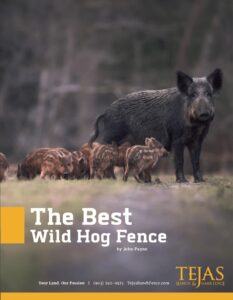 |
Download our eBook “The Best Wild Hog Fence”. Click to download the printable PDF version. |
Exclusion Fencing for Hogs
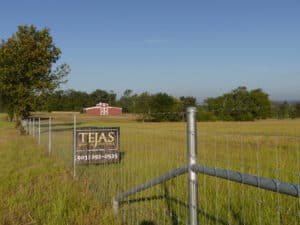 Depending on the operation to be protected, there are a number of high-tensile wire mesh designs that work well to exclude wild hogs. These mesh fences range in height from 42 to 96 inches and can be used for horse, cattle, sheep, goat, deer and exotic animal containment.
Depending on the operation to be protected, there are a number of high-tensile wire mesh designs that work well to exclude wild hogs. These mesh fences range in height from 42 to 96 inches and can be used for horse, cattle, sheep, goat, deer and exotic animal containment.
One Australian study found electric and hinge-joint fencing to be most effective for hog control. But the best hog-proof fences around are a combination of high-tensile fixed-knot wire mesh supported on steel posts with electrified outrigger that are held close to the ground by a plain or barbed wire line.
Barbed wire at the bottom near the ground further strengthens the fence and stops hogs from lifting the mesh.
It’s important to note that clearing the fence line is vital. Owners need to be able to clearly see and monitor the fence and make repairs as necessary. Often, a small animal or rodent will create a small hole or dig under the fence, which creates the beginning of a passage for a larger animal that, in turn, widens and deepens the hole. In Texas, armadillos may start a hole; a coyote may enlarge it, until finally, unchecked, the hole is wallowed out enough to permit a feral pig or deer to pass under the fence.
Why Electric Fencing
Although we have found that a high-tensile wire mesh fence properly installed will stop wild pigs, some owners like an extra level of protection. Using an electric fence wire on the outside of the fence at approximately 6 inches above the ground has been shown to considerably reduce the number of breaches under a fence. This measure is normally used to prevent coyotes or dogs from digging a hole under the fence but is also an additional measure that can be added for feral hog exclusion. Hogs are smart and electric fencing works by “educating” them to associate touching the fence with getting a very disagreeable shock. Educated hogs develop good respect for electric fences.
A combination of netting and electricity is one way you can control these vermin and minimize any maintenance due to hog damage. Although more costly and requiring more maintenance, electrifying an outrigger wire on a high-tensile wire mesh fence is a belt-and-suspenders approach to exclude feral pigs from your property.
Gates & Water Gaps that Keep Hogs Out
Another critical factor is properly installing gates and water gaps to prevent feral hogs and wild boars from getting into more vulnerable places in the fence line. Use of a properly engineered and installed water gap ensures that the wild pigs will not cross in these areas. Gates must be hung and hinged in a way that reduces the gap between the gate and ground to one that does not allow for penetration. Tejas uses special methods acquired through years of experience in the business to ensure a good fit and a long-lasting solution to keeping feral hogs off your property.
The methods outlined here can form a solid solution for hog exclusion, but there are other solutions we’ve created for clients to fit their unique needs and set of property characteristics. You may even have additional requirements for your fence. We can combine several of our solutions to meet all your fencing objectives. Contact our ranch fence contractors at Tejas Ranch & Game Fence to learn how we can customize a solution for your property. We know exclusion fencing for hogs.
To learn more about exclusion fencing for hogs and high game fences, visit https://tejasranchfence.com/
 |
Download our eBook “The Best Wild Hog Fence”. Click to download the printable PDF version. |
